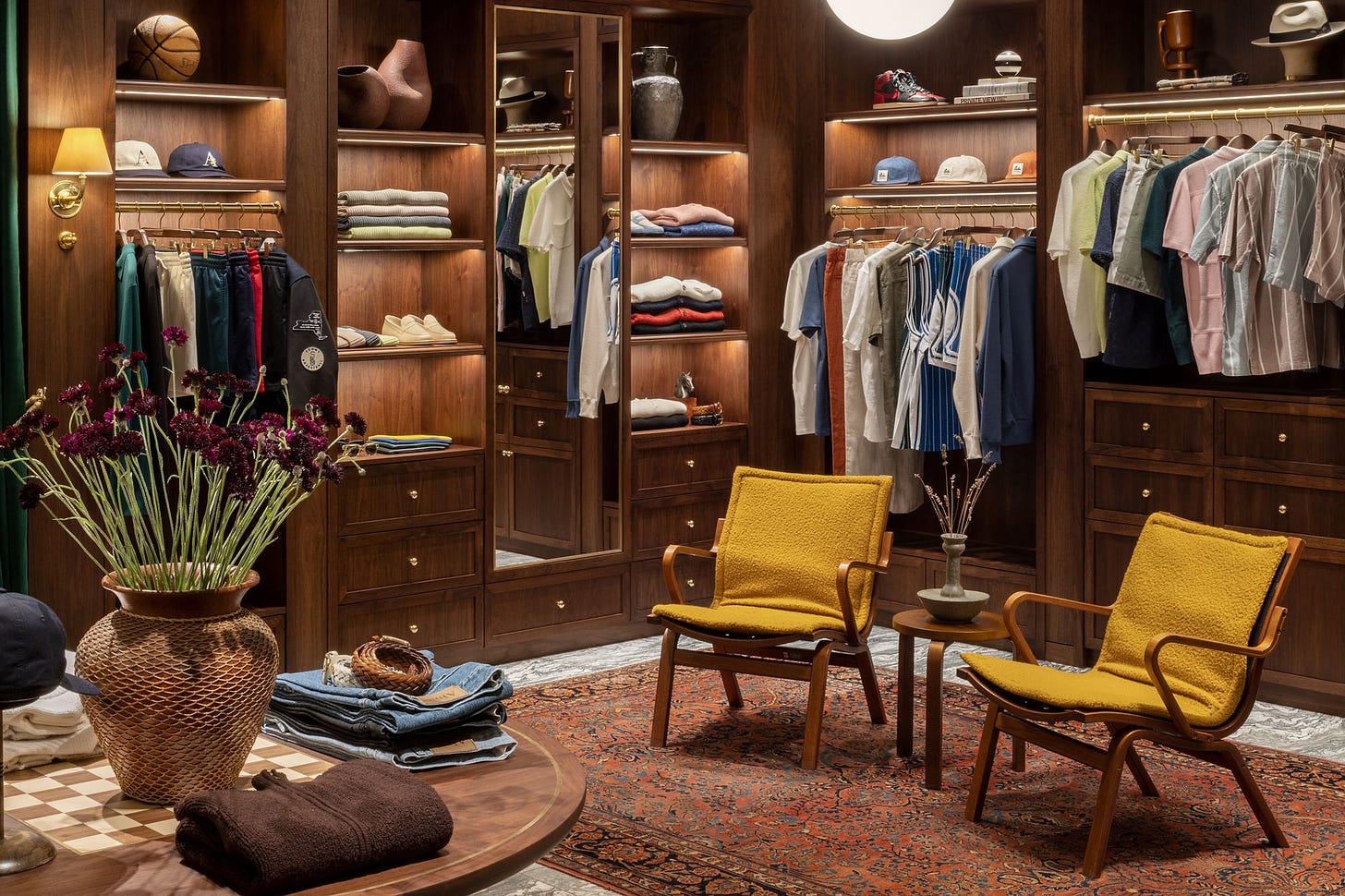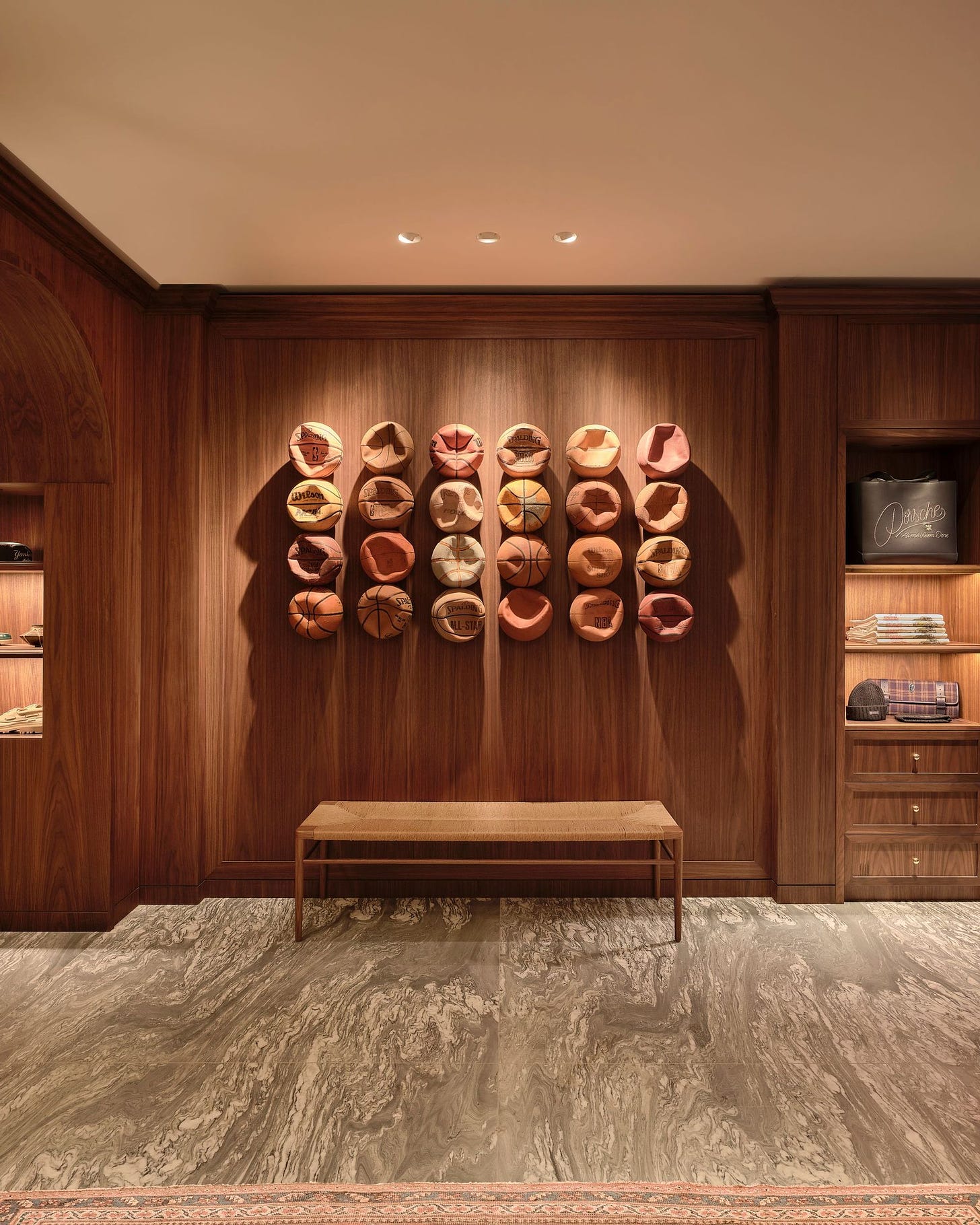Menswear is Rewriting the Rules of Visual Merchandising
The Evolution of Retail Spaces as Part of a Marketing Channel Mix
Retail architecture and store design are powerful tools to complement product strategy and further build a brand narrative. Having a prominent retail presence is now more important than ever due to omni-channel strategies in response to the increased appetite for experiential marketing post-COVID. Retail spaces started as a way to highlight product functionality. When Tim Kobe designed the layout for the Apple Store with Steve Jobs, the sections of the store were built around highlighting solutions and different use cases for the Mac. There were Mac sections in the store for music, photos, movies, and the home. As Apple’s design language became clearer, this solution-oriented approach to visual merchandising turned into a less product-centric approach and became more atmospheric. Since then, stores have been less about the product and more about cultivating an immersive ecosystem. You may notice most fashion brands’ stores are looking increasingly similar, largely mid-century modern enclaves adorned with art, vintage inspiration, and wood panelling. It’s because the formula for the perfect clothing retail space is a healthy combination of vintage nostalgia, white-glove customer service, immersion in art & culture, and most importantly, a grand marketing gesture drawing in an adjacent audience. In a highly crowded digital market, retail spaces are the best way to establish brand equity.
It Starts with Art
I was able to get an insider look at Aime Leon Dore’s new Mulberry Store on opening day.
Keep reading with a 7-day free trial
Subscribe to THREE PERCENT RULE to keep reading this post and get 7 days of free access to the full post archives.





